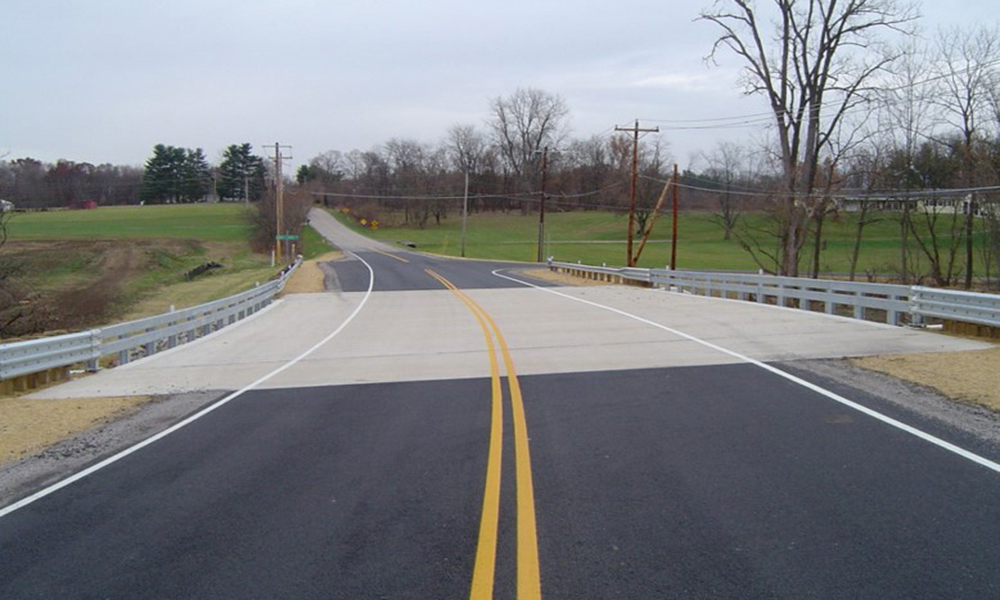Search for articles or browse our knowledge portal by topic.
Project Time Management

The Kentucky Transportation Cabinet’s (KYTC) Mission is to provide a safe, efficient, environmentally sound, and fiscally responsible transportation system that opens economic opportunities and enhances the quality of life in Kentucky. This mission guides the Cabinet’s efforts to serve citizens of the Commonwealth.
The Department of Highways’ role in fulfilling the Cabinet’s mission is to improve and maintain the Commonwealth’s roads and bridges. The Department has a construction program that is legislatively enacted through the Highway Plan and a maintenance program which is legislatively enacted through the biennial budget process. The Department’s performance in delivering the Highway Plan is measured programmatically by its ability to successfully deliver all the projects in the plan. A successful project is one that meets the defined scope with quality solutions and deliverables on the schedule given and within the budget specified in the Highway Plan. Improving the success rate of project delivery helps the Cabinet fulfill its mission and enriches the lives of all Kentuckians.
It is imperative that KYTC project managers (PMs) use project time management tools (e.g., Gantt Charts, PDP PreCon System) to schedule and track project development. To help PMs prepare effective project schedules, critical path method (CPM) templates have been created for typical project contexts and common project phases. Descriptions of each work-breakdown unit (i.e., work activities) documented on these templates can be found throughout the 17 articles which make up this HKP Knowledge Book, Time Management for Highway Project Development.

 Time management is a key aspect of project management. As such, it is a core knowledge area and closely tied to project scope and cost. The main purpose of project time management is to build processes and outputs into a project that help the PM and Project Development Team (PDT) ensure timely completion. Failing to meet a project’s schedule lowers the Department’s Highway Plan delivery success rate and hampers KYTC’s ability to fulfill its mission.
Time management is a key aspect of project management. As such, it is a core knowledge area and closely tied to project scope and cost. The main purpose of project time management is to build processes and outputs into a project that help the PM and Project Development Team (PDT) ensure timely completion. Failing to meet a project’s schedule lowers the Department’s Highway Plan delivery success rate and hampers KYTC’s ability to fulfill its mission.
At the start of the project, the the PM creates a schedule to to illustrate how project tasks will be sequenced and allocated. One tool commonly used to visualize and manage the project schedule is the CPM. To calculate project duration, the PM identifies the critical path. The critical path is the sequence of activities in the network diagram that is the longest (it controls project duration). The CPM schedule is normally created using the Microsoft Project schedule program. PMs must create a project schedule which includes required project activities and meets the legislatively prescribed schedule.
The PM and PDT should use the CPM schedule to track and manage work progress. The CPM schedule helps the PM direct resources toward needed work activities as well as report schedule status and progress to the team and KYTC management. Tracking and reporting work focuses the team on getting work done within the scheduled durations.
The PM should continually monitor the critical path. Any changes to work-activity durations on the critical path will affect a project’s finish date. The PM should also monitor activities not located on the critical path to determine if potential delays would place them on the critical path. The PM and PDT frequently review and discuss the project schedule. Conducting reviews and discussions are especially critical when preparing for District Quarterly Project Reviews and at each Project Milestone Meeting, where any variance from the baseline schedule should be identified and noted.
If a work-activity duration begins to slip and exceed the baseline, the PM (and appropriate members of the PDT) must investigate the root causes. Possible sources of delay include overscheduled resources or complexity in an activity that was not originally known. In some cases, the original duration estimates may have been inaccurate. To resolve a problem, it is imperative for the PM and PDT to understand the actual root cause(s) of a schedule delay. Once the root cause(s) of a schedule delay are identified, the PM and PDT brainstorm possible solutions. These may include acquiring additional resources, improving coordination between team members, or extending the project schedule. Any major schedule modifications that change the project milestone dates must be approved by Central Office Project Development.
The full definitions for terms included in this article (listed below) can be found in the HKP Glossary.
| Acronym | Definition |
| AASHTO | American Association of State Highway and Transportation Officials |
| ACM | Asbestos-Containing Materials |
| ADD | Area Development District |
| ADT | Average Daily Traffic |
| APE | Area of Potential Effect |
| ASSR | Acquisition Stage Relocation Report |
| BA | Biological Assessment |
| BMP | Best Management Practices |
| BNR | Below Notification Requirements |
| BO | Biological Opinion |
| CAA | Clean Air Act |
| CAP | Communicating All Promises |
| CBR | California Bearing Ratio |
| CDE | Chief District Engineer |
| CE | Categorical Exclusion |
| CFR | Code of Federal Regulations |
| CHAF | Continuous Highways Analysis Framework |
| CPM | Critical Path Method |
| CWA | Clean Water Act |
| DAQ | Division of Air Quality (Kentucky Energy And Environmental Cabinet) |
| DEC | District Environmental Coordinator |
| DES | Design Executive Summary |
| DHV | Design Hourly Volume |
| DLG | Department For Local Government |
| DNA | Data Needs Analysis |
| DTM | Digital Terrain Model |
| EA | Environmental Assessment |
| EATS | Environmental Analysis Tracking System |
| ECA | Environmental Corrective Action |
| EIS | Environmental Impact Study |
| EO | Environmental Overview |
| EPA | Environmental Protection Agency |
| EPM | Environmental Project Manager |
| ESA | Endangered Species Act |
| ESA | Environmental Site Assessment |
| ESAL | Equivalent Single Axle Load |
| ESC | Engineering Services Contract |
| FHWA | Federal Highway Administration |
| FMV | Fair Market Value |
| FONSI | Finding of No Significant Impact |
| GNSS | Global Navigation Satellite System |
| GPR | Ground Penetrating Radar |
| Hazmat | Hazardous Materials |
| HMA | Hot Mix Asphalt |
| IOJ | Interlocutory Order and Judgment |
| IP | Individual Permit |
| IPA | Individual Project Agreement |
| JI | Joint Inspectiont |
| JUM | Joint Utility Information Meeting |
| KPDES | Kentucky Pollution Discharge Elimination System |
| KRS | Kentucky Revised Statutes |
| Acronym | Definition |
| KURTS | Kentucky Utility and Rail Tracking System |
| LiDAR | Light Detection and Ranging |
| LOP | Letter of Permission |
| LPA | Local Public Agency |
| LRC | Legislative Research Commission |
| LWCFA | Land and Water Conservation Fund Act |
| MAR | Minor Acquisition Review |
| ME | Mechanistic Empirical |
| MOA | Memorandum of Agreement |
| MOT | Maintenance of Traffic |
| MOU | Memorandum of Understanding |
| MS4 | Municipal Separate Storm Sewer System |
| MPO | Metropolitan Planning Organization |
| MUTCD | Manual on Uniform Traffic Control Devices |
| NAAQS | National Ambient Air Quality Standards |
| NAGPRA | Native American Graves Protection and Repatriation Act |
| NEPA | National Environmental Policy Act |
| NHPA | National Historic Preservation Act |
| NHS | National Highway System |
| NOA | Notice of Availability |
| NOI | Notice of Intent |
| NPS | National Park Service |
| NRHP | National Register of Historic Places |
| NTP | Notice to Proceed |
| PCB | Polychlorinated Biphenyl |
| PCC | Portland Cement Concrete |
| PDM | District Project Development Branch Manager |
| PDT | Project Development Team |
| PIO | Public Information Officers |
| PIP | Public Involvement Plan |
| PL&G | Preliminary Line & Grade |
| PM | Project Manager |
| POCI | Project of Corporate Interest |
| PODI | Project of Divisional Interest |
| PS&E | Plans, Specifications, & Estimates Branch |
| REC | Recognized Environmental Condition |
| RFP | Request For Proposals |
| ROD | Record of Decision |
| ROW | Right of Way |
| SHPO | State Historic Preservation Office / Kentucky Heritage Council |
| SIP | State Implementation Plan |
| SME | Subject-Matter Expert |
| STIP | Statewide Transportation Improvement Program |
| SUE | Subsurface Utility Engineering |
| TIP | Transportation Improvement Program |
| TMP | Traffic Management Plan |
| TVA | Tennessee Valley Authority |
| USACE | U.S. Army Corps Of Engineers |
| USCG | U.S. Coast Guard |
| USFS | U.S. Forest Service |
| USFWS | U.S. Fish and Wildlife Service |
| USGS | U.S. Geological Survey |
| UST | Underground Storage Tank |
| WQC | Water Quality Certification |
Rural Federal Bridge Replacement CE1 Files
- Rural Federal Bridge Replacement CE I Acceptance, Arch & Asbestos (MS Project File).
- Rural Federal Bridge Replacement CE I Condemnation, Arch & Asbestos (MS Project File)
- Rural Federal Bridge Replacement CE I Process Flow Map (PDF)
- Rural Federal Bridge Replacement CE I Acceptance, No Arch & Asbestos (MS Project File)
- Rural Federal Bridge Replacement CE I Condemnation, No Arch & Asbestos (MS Project File)
Urban Federal Bridge Replacement with Railroad CE1 Files
- Urban Federal Bridge Replacement with RR CE I Acceptance, Arch & Asbestos (MS Project File)
- Urban Federal Bridge Replacement with RR CE I Acceptance, No Arch & Asbestos (MS Project File)
- Urban Federal Bridge Replacement with RR CE I Condemnation, Arch & Asbestos (MS Project File)
- Urban Federal Bridge Replacement with RR CE I Condemnation, No Arch & Asbestos (MS Project File)
- Urban Federal Bridge Replacement with RR CE I Process Map (PDF)
EA-FONSI Rural Road Widening (with Railroad Involvement) Files
- EA FONSI Acceptance, Arch & Asbestos (MS Project File)
- EA FONSI Acceptance, No Arch & Asbestos (MS Project File)
- EA FONSI Condemnation, Arch & Asbestos (MS Project File)
- EA FONSI Condemnation, No Arch & Asbestos (MS Project File)
- 4 Mile Rural Road Widening into Urban Intersection EA FONSI Process Flow Map (PDF)
Time Management for Highway Project Development Knowledge Book:
Access the complete Knowledge Book here: Time Managment Knowledge Book
Next Article: Project Initiation

